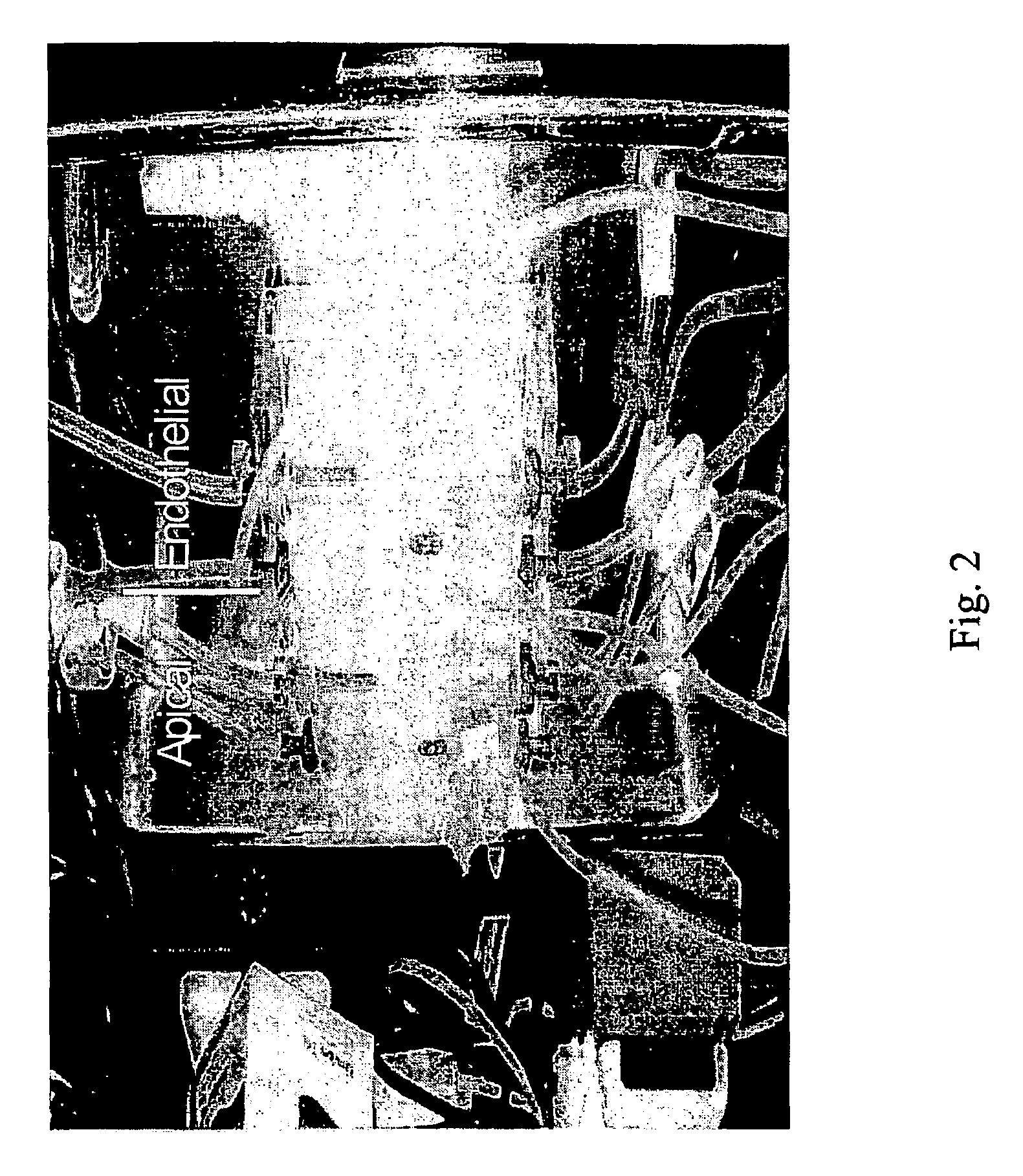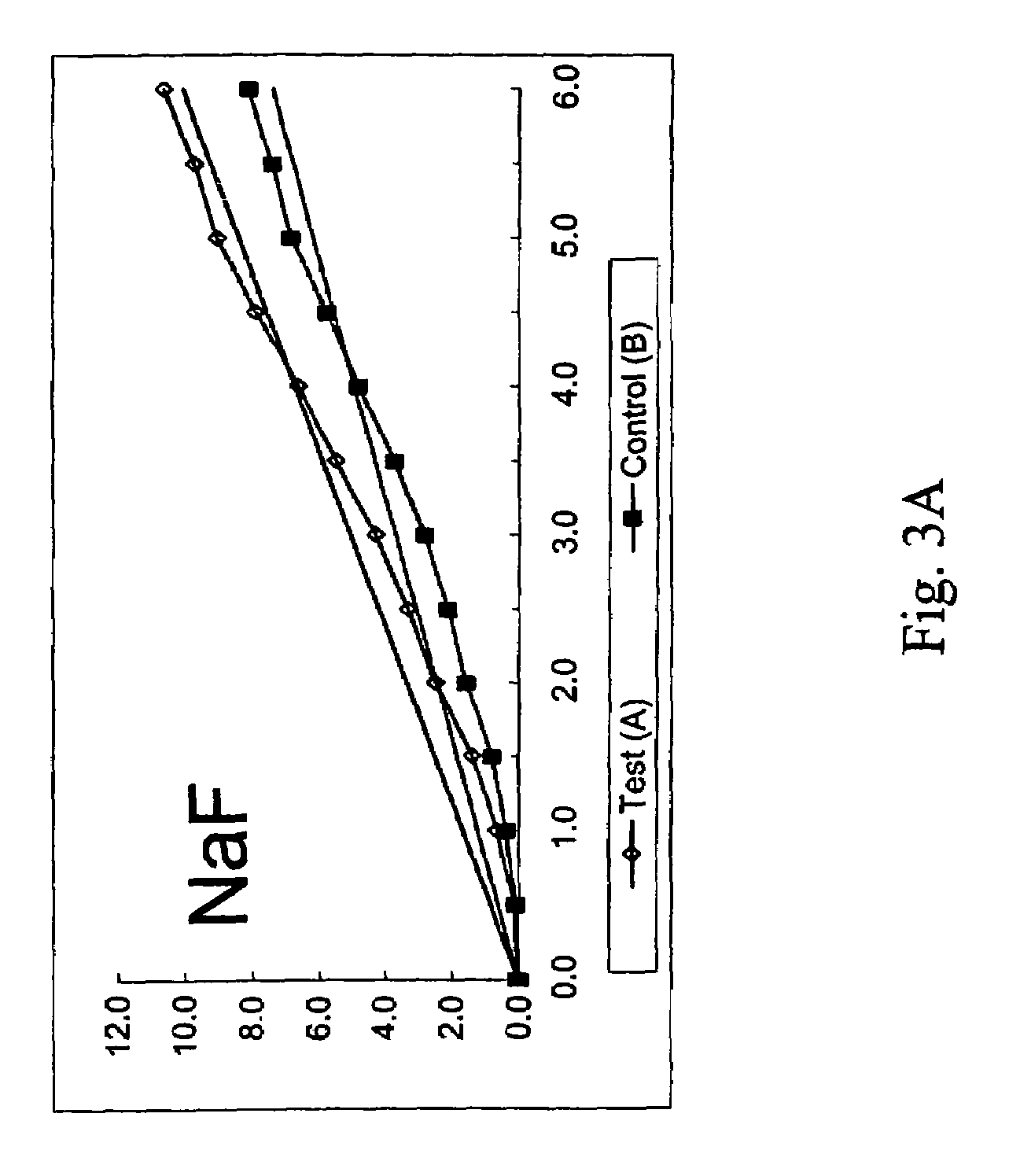Peptide-enhanced corneal drug delivery
a peptide-enhanced, corneal technology, applied in the direction of drug compositions, biocide, heterocyclic compound active ingredients, etc., can solve the problems of poor retention of administered drugs in the ocular region, inefficiency of drug transport across the cornea, and low efficiency, so as to reduce the antigenicity of peptides, increase the hydrophility of peptides, and eliminate the positive charge of lysines
- Summary
- Abstract
- Description
- Claims
- Application Information
AI Technical Summary
Benefits of technology
Problems solved by technology
Method used
Image
Examples
example 1
Peptide Synthesis
[0045]The two peptides tested (NC-1059, Seq. ID No. 1 and NC-1063, Seq. ID No. 2) were synthesized by solid phase synthesis using 9-fluorenyl methoxycarbonyl (FMOC) chemistry on an ABI 431A peptide synthesizer (Perkin-Elmer Biosystems, Norwalk, Conn.). Reagents included p-Hydroxymethylphenoxymethyl (HMP) resin reloaded with the C-terminal amino acid (Perkin-Elmer) and N∝-Fmoc; amino acids (Perkin-Elmer, Bachem (Torrence, Calif.), Peninsula Laboratories (Belmont, Calif.) and Peptides International (Louisville, Ky.)). Coupling reactions were performed in the presence of a ten-fold excess of amino acid with HOBt:HBTU in dimethylformamide (DMF). The peptide was released from the resin and all side chain protecting groups were removed via a chemical cleavage reaction using trifluoroacetic acid (TFA) in the presence of 0.5 mL of 1,2-ethanedithiol and 0.5 mL of thioanisole at room temperature for 200 min. The cleaved peptide was washed with ether and the resultant precipit...
example 2
[0069]This example will follow the procedures set forth in Example 1, however, conjunctiva-sclera, rather than cornea, will be tested. The tests will use a piece of sclera 16 mm in diameter excised from both globes. The sclera will be obtained from eyes enucleated from euthanized rabbits and will be from an area where there is no muscle attachments or blood vessel leaks as determined with Evans blue stain. For the permeability portion of the assays, the sclera will be clamped in the corneal holder similarly to how the cornea was clamped. The exposed surface area for diffusion was 1.2 cm2 for the cornea and will be 1.1 cm2 for the sclera. The excised conjunctiva-sclera will be mounted choroid side down in a specially designed Lucite perfusion chamber, in which the sclera is mounted horizontally in a two-chambered diffusion apparatus. The diffusion apparatus will be surrounded by a water-circulating jacket connected to a temperature-controlled water bath, that maintains the conjunctiv...
example 3
[0073]This example followed the procedures of the monolayer experiments of Example 1 in order to test the uptake of fluorescently labeled methotrexate (MTX) and MTX that was not fluorescently labeled. Enhanced uptake of the fluorescently labeld MTX was not observed during co-incubation due to adverse interactions between the peptide and the modified drugs. However, in peptide washout experiments in culture, MTX uptake increased by ten-fold. Measurement of the unlabeled MTX was performed using LC-ESI-MS and a standard MTX amount for calibration and comparison purposes.
PUM
| Property | Measurement | Unit |
|---|---|---|
| single-channel conductances | aaaaa | aaaaa |
| single-channel conductances | aaaaa | aaaaa |
| contact time | aaaaa | aaaaa |
Abstract
Description
Claims
Application Information
 Login to View More
Login to View More - R&D
- Intellectual Property
- Life Sciences
- Materials
- Tech Scout
- Unparalleled Data Quality
- Higher Quality Content
- 60% Fewer Hallucinations
Browse by: Latest US Patents, China's latest patents, Technical Efficacy Thesaurus, Application Domain, Technology Topic, Popular Technical Reports.
© 2025 PatSnap. All rights reserved.Legal|Privacy policy|Modern Slavery Act Transparency Statement|Sitemap|About US| Contact US: help@patsnap.com



